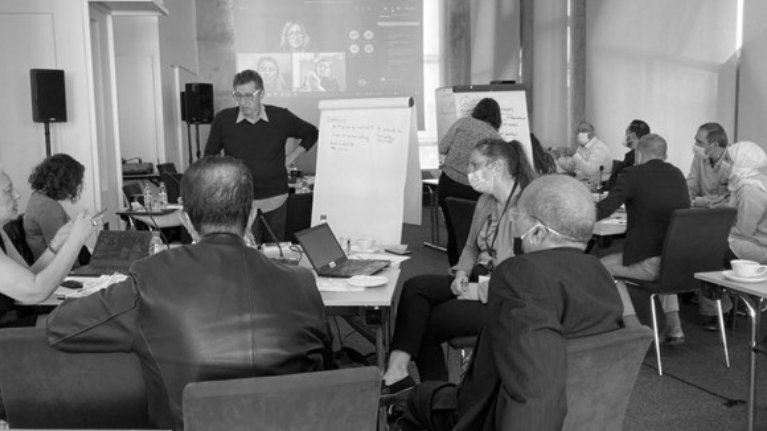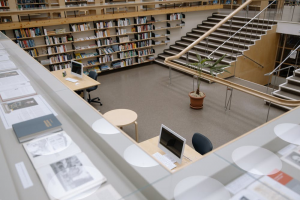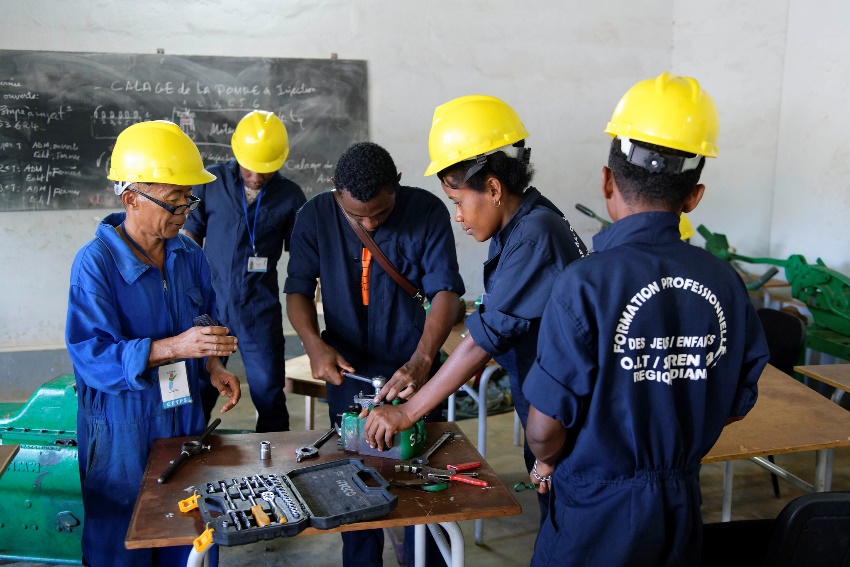Non-public provision of active labor market programs in Arab- Mediterranean countries: An inventory of youth programs
Non-public provision of active labor market programs in Arab- Mediterranean countries: An inventory of youth programs
Information is gathered from other international organizations that promote skills development and the transition from education and training to work. The Interagency Group on Technical and Vocational Education and Training (IAG-TVET) was established in 2009 to share research findings, coordinate joint research endeavours, and improve collaboration among organizations working at the international and national levels.
Slug
international-organizations
Measuring the outcomes of skills systems, policies and targeted programmes is essential in order to monitor and improve their effectiveness and relevance. Elements of sound assessment processes include: institutions to sustain feedback from employers and trainees; mechanisms to track labour market outcomes of training and systems of accountability that use this information; and, quantitative and qualitative labour market information and its dissemination to all stakeholders.
Slug
monitoring-and-evaluation
Globally, nearly 68 million young women and men are looking for and available for work, and an estimated 123 million young people are working but living in poverty. The number who are not in employment, education or training (NEET) stands at 267 million, a majority of whom are young women. Significantly, young people are three times as likely as adults (25 years and older) to be unemployed.
Skills development is a primary means of enabling young people to make a smooth transition to work. A comprehensive approach is required to integrate young women and men in the labour market, including relevant and quality skills training, labour market information, career guidance and employment services, recognition of prior learning, incorporating entrepreneurship with training and effective skills forecasting. Improved basic education and core work skills are particularly important to enable youth to engage in lifelong learning as well as transition to the labour market.
Working papers, reports, and other publications from international organizations, academic institutions and bilateral agencies. Research findings to stimulate informed debate on skills, employment and productivity issues.
This note presents and analyzes the main design features of an inventory of non-publicly provided Active Labor Market Programs (ALMPs) in Arab-Mediterranean Countries (AMCs), with a specific focus on programs targeted at youth. Despite considerable international evidence, there is little systematic analysis on the effectiveness of ALMPs in AMCs as most programs and investments remain largely un-assessed. Since most AMCs lack unemployment insurance systems or other safety nets for the unemployed, ALMPs constitute a relevant instrument to address the consequences of labor market frictions, such as high unemployment and slow school-to-work transition. Programs from nine countries are included in the inventory: Morocco, Algeria, Tunisia, Egypt, Lebanon, Syria, Jordan, West Bank and Gaza, and Yemen. Benchmarked against international best practices, assessment of the programs covered in the inventory reveals that the majority lack the necessary mix of design features that make programs effective. These findings call for urgent reforms in program design and delivery, especially given the sizeable financial investments in programs and the urgency to improve labor market outcomes among youth. This policy note constitutes a first step towards understanding and assessing provision of ALMPs in the Middle East and North Africa region and intends to provide policy makers and financiers with options for reform to enhance efficiency of existing programs and improve the design of future interventions. In addition to specific aspects of program design and implementation, stakeholder coordination needs to be strengthened and put at the forefront of ALMP reform.
Countries and territories:












